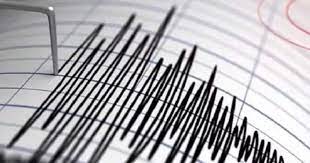
A significant earthquake with a magnitude of 7.1 struck the island of Kyushu in southern Japan on Thursday, according to the Japan Meteorological Agency. The quake, initially reported as a magnitude 6.9 by NHK, was centered off the eastern coast of Kyushu at a depth of approximately 30 kilometers.
The tremor has triggered a tsunami that has already reached the western Miyazaki prefecture, prompting the issuance of a tsunami warning. The Japanese government has mobilized a special task force to address the situation and provide immediate assistance. While there have been no immediate reports of major damage, the situation is being closely monitored.
Japan, situated in one of the most seismically active regions in the world, is known for its stringent building regulations designed to withstand powerful earthquakes. The country experiences around 1,500 seismic events annually, with the majority being minor. However, the impact of these earthquakes can vary significantly depending on their location and depth.
In January of this year, a massive earthquake struck the peninsula, resulting in at least 260 deaths, including those directly caused by the quake and related incidents. This recent earthquake is a stark reminder of Japan’s vulnerability to natural disasters.
The most devastating earthquake in Japan’s history occurred on March 11, 2011, with a magnitude of 9.0. This undersea quake triggered a tsunami that led to the deaths or disappearance of around 18,500 people and caused catastrophic damage to the Fukushima nuclear plant. The disaster remains the most severe nuclear accident since Chernobyl, with the total cost of the disaster estimated at 16.9 trillion yen ($112 billion), excluding the ongoing and hazardous decommissioning of the Fukushima facility.
Sources By Agencies


